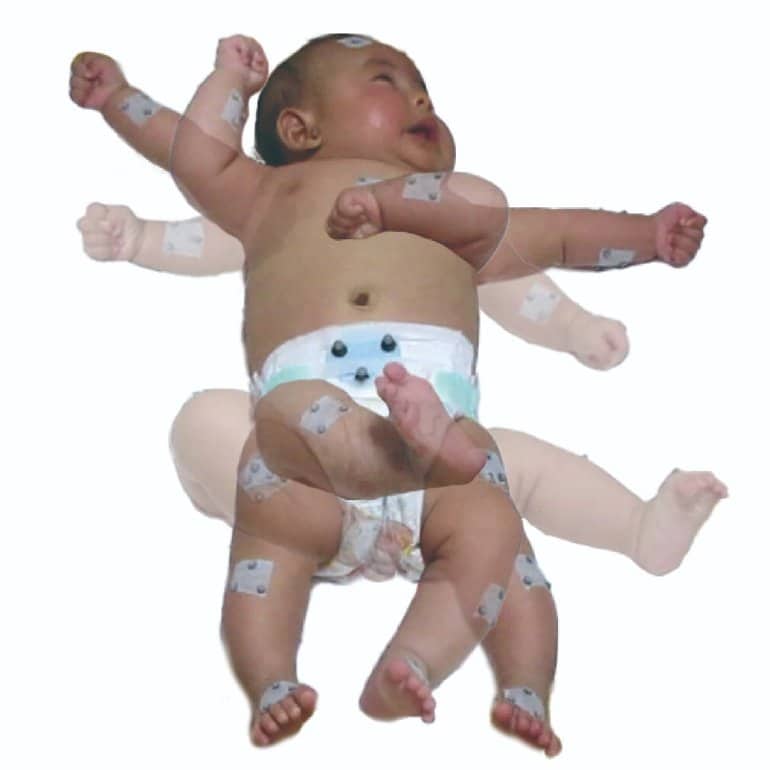Spontaneous Baby Movements Are Important for Development of Coordinated
Summary: A new study reveals the spontaneous, random movements babies make aid in the development of the sensorimotor system.
Source: University of Tokyo
Spontaneous, random baby movements aid development of their sensorimotor system, according to new research led by the University of Tokyo.
Detailed motion capture of newborns and infants was combined with a musculoskeletal computer model to enable researchers to analyze communication among muscles and sensation across the whole body.
Researchers found patterns of muscle interaction developing based on the babies’ random exploratory behavior that would later enable them to perform sequential movements as infants.
Better understanding how our sensorimotor system develops could help us gain insight into the origin of human movement as well as earlier diagnoses of developmental disorders.
Right from birth—and even in the womb—babies start to kick, wiggle and move seemingly without aim or external stimulation. These are called “spontaneous movements,” and researchers believe that they have an important role to play in the development of the sensorimotor system, i.e., the ability to control the muscles, movement and coordination.
If researchers can better understand these seemingly random movements and how they are involved in early human development, we might also be able to identify early indicators for certain developmental disorders, such as cerebral palsy.
Currently, there is limited knowledge about how newborns and infants learn to move. “Previous research into sensorimotor development has focused on kinematic properties, muscle activities which cause movement in a joint or a part of the body,” said Project Assistant Professor Hoshinori Kanazawa from the Graduate School of Information Science and Technology.
“However, our study focused on muscle activity and sensory input signals for the whole body. By combining a musculoskeletal model and neuroscientific method, we found that spontaneous movements, which seem to have no explicit task or purpose, contribute to coordinated sensorimotor development.”
First, the team recorded the joint movements of 12 healthy newborns (less than 10 days old) and 10 young infants (about three months old) using motion capture technology. Next, they estimated the babies’ muscle activity and sensory input signals with the aid of a whole-body, infant-scale musculoskeletal computer model which they had created.
Finally, they used computer algorithms to analyze the spatiotemporal (both space and time) features of the interaction between the input signals and muscle activity.
“We were surprised that during spontaneous movement, infants’ movements ‘wandered’ and they pursued various sensorimotor interactions. We named this phenomenon ‘sensorimotor wandering,’” said Kanazawa.

“It has been commonly assumed that sensorimotor system development generally depends on the occurrence of repeated sensorimotor interactions, meaning the more you do the same action…
Read More: Spontaneous Baby Movements Are Important for Development of Coordinated
